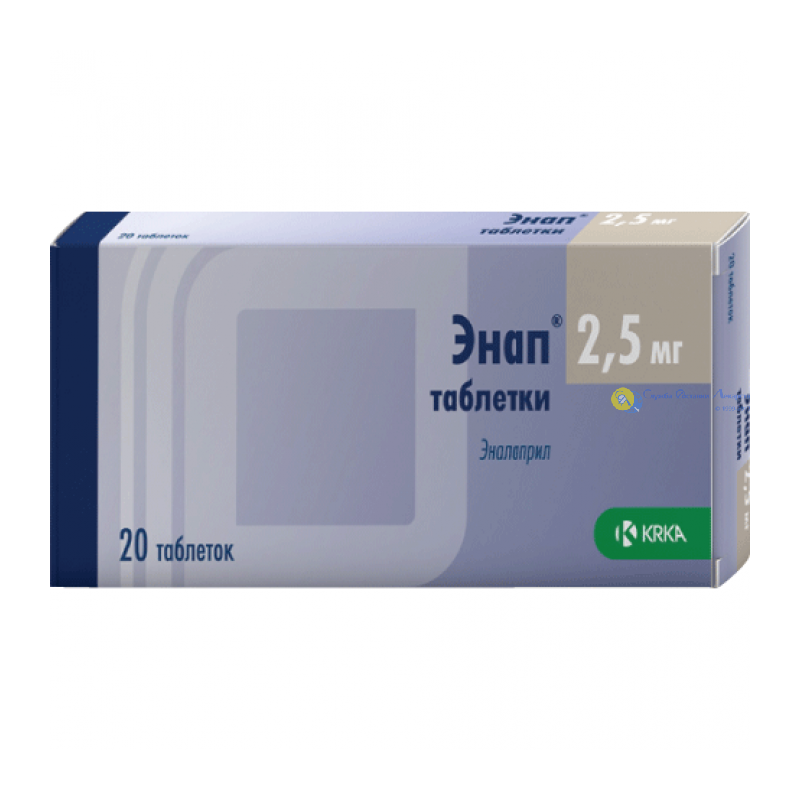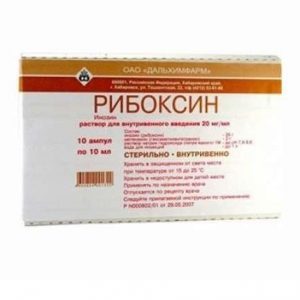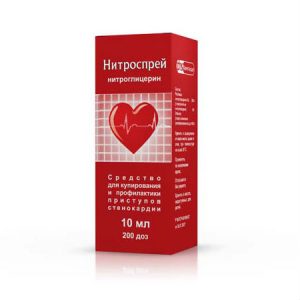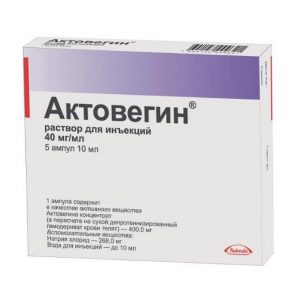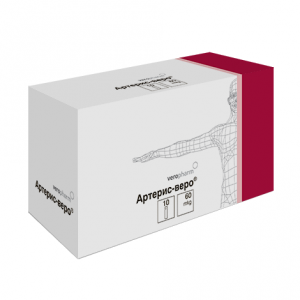Description
Release form
Tablets.
packaging 20 pcs
Pharmacological action of
ENAP is an antihypertensive drug whose mechanism of action is associated with inhibition of the activity of the angiotensin-converting enzyme, leading to a decrease in the formation of angiotensin-II.
Enalapril is a “prodrug”: as a result of its hydrolysis, enalaprilat is formed, which inhibits ACE. The mechanism of its action is associated with a decrease in the formation of angiotensin II from angiotensin I, a decrease in the content of which leads to a direct decrease in the release of aldosterone. In this case, the general peripheral vascular resistance, systolic and diastolic blood pressure (BP), post- and preload on the myocardium are reduced.
Expands arteries to a greater extent than veins, with no reflex increase in heart rate.
The antihypertensive effect is more pronounced with a high level of plasma renin than with a normal or reduced level of it. A decrease in blood pressure (BP) within the therapeutic range does not affect cerebral circulation, blood flow in the vessels of the brain is maintained at a sufficient level and against a background of reduced blood pressure. Enhances coronary and renal blood flow.
With prolonged use, hypertrophy of the left ventricle of the myocardium and myocytes of the walls of the arteries of the resistive type, prevents the progression of heart failure and slows down the development of dilatation of the left ventricle. Improves blood supply to the ischemic myocardium. Reduces platelet aggregation.
Has some diuretic effect.
The time of onset of the hypotensive effect when taken orally is 1 hour, reaches a maximum after 4-6 hours and lasts up to 24 hours. In some patients, therapy is needed for several weeks to achieve the optimal level of blood pressure. With heart failure, a noticeable clinical effect is observed with prolonged use – 6 months or more.
Indications
Arterial hypertension.
Chronic heart failure (as part of combination therapy).
Asymptomatic left ventricular dysfunction (as part of combination therapy).
Contraindications
Hypersensitivity to enalapril or other components of the drug.
Hypersensitivity to other ACE inhibitors.
History of angioedema, including those associated with the use of ACE inhibitors (an allergic reaction with sharp swelling of the lips, face, neck and possibly arms and legs, accompanied by suffocation and hoarseness).
porphyria.
Pregnancy.
Lactation (breastfeeding).
Patients who have ever had angioedema.
Age under 18 years (efficacy and safety not established).
Use during pregnancy and lactation
During pregnancy and during lactation, the drug should not be prescribed.
If pregnancy occurs during the treatment with Enap, you should inform your doctor as soon as possible. He will prescribe another antihypertensive treatment.
Composition
1 tablet contains:
Active ingredients: enalapril maleate 2.5 mg.
Excipients: lactose monohydrate, hydroxypropyl cellulose, corn starch, sodium bicarbonate, talc, magnesium stearate.
Dosing and Administration
Tablets should be taken orally with a small amount of liquid.
Tablets can be taken before, during, or after meals. You should get used to taking the drug regularly and at the same time.
If the patient has missed taking the drug, it should be taken as soon as possible, but not if the next few hours remain before the next dose is taken. In this case, you should take only the next dose according to the scheme and do not take the missed dose. Doses should never be doubled.
Enap treatment requires regular medical examinations, especially at the beginning of treatment and / or in determining the most appropriate dose of the drug. The frequency of medical examinations is determined by the attending physician.
The dose of the drug is always adjusted depending on the condition of the patient.
Treatment of arterial hypertension
The recommended starting dose is 5 mg once daily. After taking the initial dose, patients should be under medical supervision for 2 hours and an additional 1 hour until blood pressure stabilizes.
Dose adjustment depends on the achievement of the therapeutic effect (lowering blood pressure) and in the absence of a clinical effect, increase after 1-2 weeks by 5 mg. Typically, the maintenance dose is from 10 to 20 mg, if necessary and with sufficiently good tolerance, the dose can be increased to 40 mg per day.
The maximum daily dose is 40 mg.
At higher doses, it is advisable to divide into 2 doses.
Treatment of arterial hypertension in special clinical cases
The initial dose for patients who could not stop taking diuretics before starting treatment with Enap is 2.5 mg in a single dose.
Patients with hyponatremia (serum sodium ion concentration less than 130 mmol / L) or serum creatinine concentration more than 0.14 mmol / L, the initial dose is 2.5 mg once a day.
In elderly patients, a more pronounced hypotensive effect and an increase in the duration of the drug s action are more often observed, which is associated with a decrease in the rate of enalapril excretion, so the recommended initial dose for the elderly is 1.25 mg.
Treatment of Congestive Heart Failure
The recommended starting dose is 2.5 mg once daily. Enap dose should be increased gradually until the maximum clinical effect is achieved, usually after 2 to 4 weeks. The usual maintenance dose is from 2.5 mg to 10 mg as a single dose, the maximum maintenance dose is 20 mg twice a day.
Treatment of asymptomatic left ventricular dysfunction
Recommended starting dose is 2.5 mg twice daily, some dose adjustment depends on patient tolerance. Typically, the maintenance dose is 10 mg twice daily.
Treatment of hypertension in kidney disease
The dose of Enap is determined by renal function and / or creatinine clearance.
For patients with creatinine clearance greater than 0.5 ml / sec (30 ml / min), the initial dose is 5 mg per day.
For patients with creatinine clearance less than 0.5 ml / sec (30 ml / min), the initial dose is 2.5 mg per day and gradually increases until a clinical effect is achieved.
Treatment of patients undergoing hemodialysis
For patients on the day of hemodialysis – 2.5 mg on the remaining days, the doctor adjusts the dose in accordance with blood pressure.
Side effects
Classification of the incidence of side effects (WHO): very often {> 1/10), often (> 1/100 and <1/10), infrequently (> 1/1000 and <1/100), rarely (> 1/10 000 and <1/1000), very rarely (<1/10 000), including individual messages. From the hemopoietic system: rarely – neutropenia, decreased hemoglobin and hematocrit, thrombocytopenia, agranulocytosis, inhibition of bone marrow hematopoiesis, pancytopenia, lymphadenopathy, autoimmune diseases, very rarely – anemia (including aplastic and hemolytic). From the side of metabolism: infrequently – exacerbation of the course of gout, hypoglycemia. From the nervous system: very often – dizziness, weakness often – headache, asthenia, depression infrequently – insomnia, drowsiness, paresthesia, increased irritability rarely – unusual dreams, sleep disturbances very rarely – confusion, insomnia. On the part of the sensory organs: often – changes in taste infrequently – tinnitus, blurred vision. From the cardiovascular system: often – a marked decrease in blood pressure, orthostatic hypotension, fainting, chest pain, cardiac arrhythmias (atrial brady or tachycardia, atrial fibrillation), tachycardia, angina pectoris infrequently – palpitations, myocardial infarction or stroke ( marked decrease in blood pressure) rarely – thromboembolism of the pulmonary artery branch, Raynaud’s syndrome. From the respiratory system: very often – cough often – shortness of breath rarely – rhinorrhea, sore throat and hoarseness, bronchospasm rarely – lung infiltrates, rhinitis, allergic alveolitis / eosinophilic pneumonia. From the digestive system: very often – nausea often – diarrhea, abdominal pain, flatulence infrequently – ileitis, intestinal obstruction, pancreatitis, vomiting, constipation, anorexia, dry mucous membranes of the mouth, peptic ulcer rarely – impaired liver and biliary function, hepatitis (hepatocellular or cholestatic), xolestatic jaundice, fulminant liver necrosis, stomatitis / aphthous ulcers, glossitis very rarely – intestinal angioedema. From the skin: often – a skin rash infrequently – exudative erythema multiforme, exfoliative dermatitis, toxic epidermal necrolysis, pemphigus, erythroderma, profuse sweating, pruritus, urticaria, alopecia, photosensitivity. From the urinary system: infrequently – impaired renal function, acute renal failure rarely – oliguria. From the reproductive system: infrequently – decreased potency, rarely decreased libido – gynecomastia. From the musculoskeletal system: often – muscle cramps infrequently – arthralgia. On the part of laboratory parameters: often – hyperkalemia, increased serum creatinine concentration infrequently – hyperglycemia, hyperuricemia, hypokalemia, hyponagraemia, increased serum urea concentration rarely – increased liver transaminase activity and bilirubin concentration. Allergic reactions: infrequently – Stevens-Johnson syndrome rarely – angioedema of the face, lips, tongue, pharynx, larynx, limbs. Others: a symptom complex has been described, which may include fever, myalgia and arthralgia, serositis, vasculitis, increased erythrocyte sedimentation rate, leukocytosis and eosinophilia, skin rash, positive test for antinuclear antibodies. Also, a symptom complex is described, which includes hyperemia of the skin of the face, nausea, vomiting and arterial hypotension and can develop with the simultaneous use of ACE inhibitors and gold preparations (sodium aurothiomalate) iv. Drug Interaction Patients should refrain from drinking alcohol as ethanol enhances blood pressure (AD) drop with enalapril. Concomitant use of enalapril and diuretics or other antihypertensive agents increases the effectiveness of these drugs. Interaction with medicines used to treat heart failure (cardiac glycosides) is not clinically relevant. Before surgery, the doctor should be advised that the patient is taking enalapril as there is a risk of arterial hypotension during general anesthesia. Concomitant administration of enalapril and non-steroidal anti-inflammatory drugs (NSAIDs) or acetylsalicylic acid (aspirin), as well as estrogens, may reduce the effectiveness of enalapril and increase the risk of renal dysfunction. The concomitant use of some diuretics (spironolactone, amiloride or triamterene) and / or the supplemental administration of potassium-containing tablets may lead to increased serum potassium (hyperkalemia). Bone marrow depressants increase the risk of neutropenia and / or agranulocytosis. Immunosuppressants, allopurinol, cytostatics increase hematotoxicity. Enalapril weakens the action of theophylline-containing agents. Concomitant use of lithium preparations can increase the side effect of lithium. With the simultaneous administration of the drug Enap with cimetidine, the half-life (T 1/2) of Enap increases. If the patient is already taking the above medication or is advised to take any of these drugs, he or she should be advised by the physician that he or she is taking Enap. Overdose Symptoms: a marked decrease in blood pressure up to the development of collapse, myocardial infarction, acute disorders of cerebral circulation or thromboembolic complications, convulsions, stupor. Treatment: The patient should be moved to a horizontal position with a low head. In mild cases, gastric lavage and intake of activated carbon are shown in more serious cases – measures aimed at normalization of blood pressure, in / in the introduction of 0.9% sodium chloride solution, plasma substitutes, if necessary – in / in the introduction of angiotensin II, hemodialysis (excretion rate) – 62 ml / min). Storage conditions In the dark place at a temperature of no higher than 25 ° C. Expiration 3 years. Deystvuyuschee substances enalapril Conditions of supply of pharmacies Prescription Dosage form dosage form tablets KRKA d.d. Novo mesto AO, Slovenia
